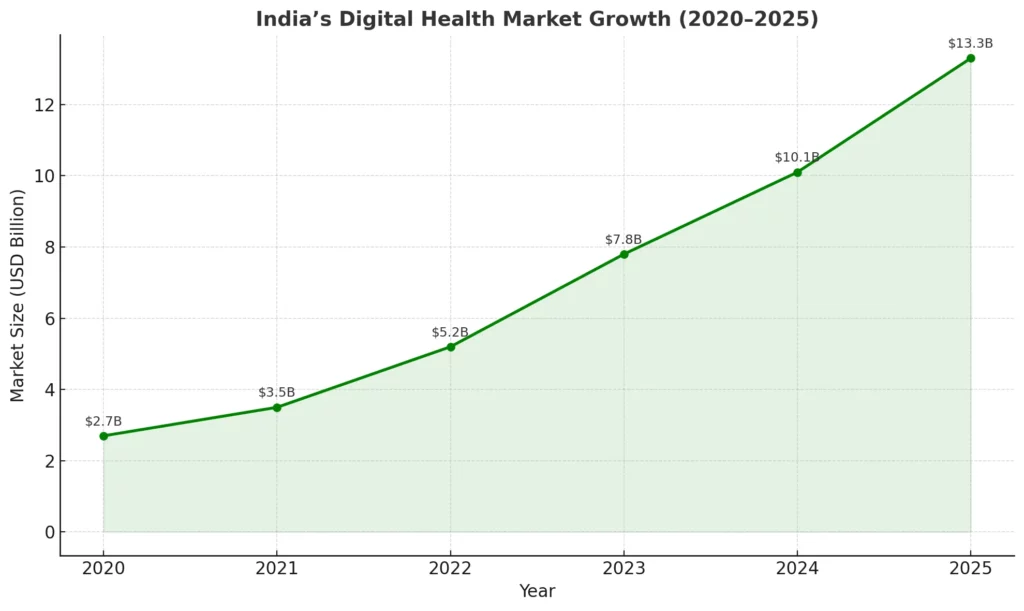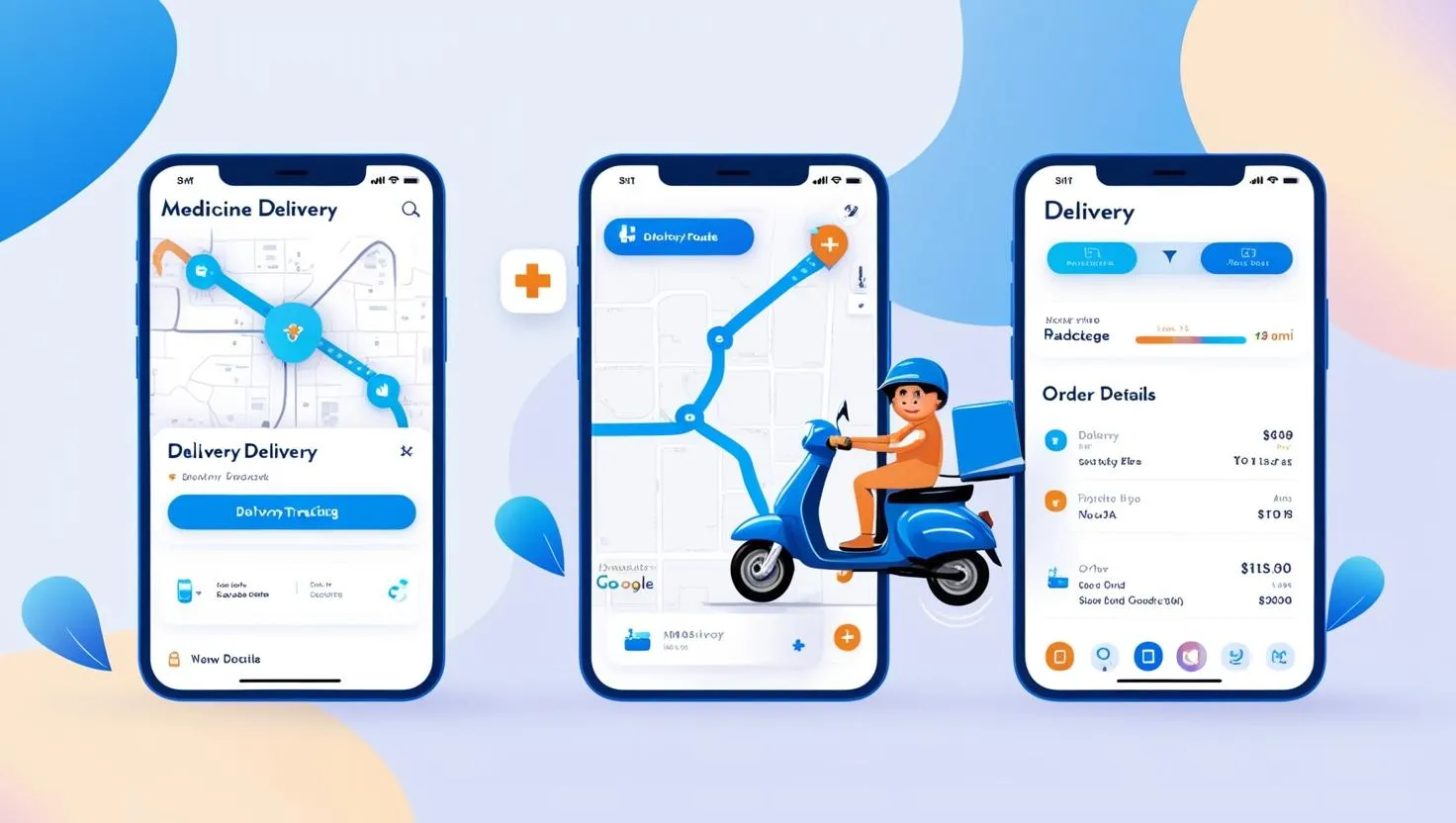It’s 2025, and India’s digital health revolution is sprinting ahead like it’s on performance enhancers. From remote villages to posh metros, people now expect prescriptions, doctor consults, and medicine deliveries right at their fingertips—literally. And guess who helped normalize all this? Apps like 1mg, PharmEasy, and NetMeds. If you’re a startup founder or an aspiring healthtech disruptor, you’re probably asking: How do I build something like that—maybe even better?
During the second wave of COVID-19, I couldn’t get basic antibiotics for my family. Local chemists were out, doctors weren’t available, and panic was rising. Then someone mentioned 1mg. Within hours, I had a verified prescription, a doctor call, and meds on my doorstep. That moment flipped a switch: digital healthcare wasn’t a luxury—it was a lifesaver. Since then, I’ve watched countless founders jump on this opportunity, and with good reason.
This isn’t your typical “clone it and go” article. I’ll walk you through the actual blueprint of how to build a 1mg alternative—features, tech stack, revenue models, UX strategy, and more. Whether you’re eyeing India’s Tier-2 cities or planning a hyperlocal pharmacy network, this is your launchpad.
Why You Need to Read This
Because building a health app isn’t like launching another food delivery startup. There are rules, regulations, real lives, and real money at stake. So if you want to build smarter, faster, and legally, this is for you.

Why Build a 1mg Clone in 2025?
Rising Market Potential
India’s digital health market—especially the online pharmacy segment—is booming, expected to cross ₹35,000 Cr by 2026. With increasing smartphone penetration and government support for e-health initiatives, now is the perfect time to enter the space with a focused 1mg-like solution.
Shift Toward Digital Healthcare
Consumer behavior has changed dramatically. From medicine orders to teleconsultations, users now prefer seamless, app-based interactions over traditional in-person visits. A 1mg clone taps into this demand with on-demand care, from the comfort of home.
Trust in Verified Services
Users are growing skeptical of unverified sellers and misinformation. Your clone can stand out by offering verified prescriptions, licensed pharmacies, and built-in teleconsultation features—restoring trust and creating loyalty.
Hyperlocal Differentiation = Big Advantage
Most clones aim too wide—and fail. Real success lies in localization: offering regional language support, stocking medicines popular in specific areas, and integrating with local delivery networks. Serve Tier 2 & Tier 3 cities with accuracy, and you win where others don’t even compete.
Key Features Your 1mg Clone MUST Have
User Features
- Search for 1L+ medicines, OTC products, and health devices
- Upload prescriptions and get instant validation
- Digital reports and refill reminders
- Real-time tracking for medicines and lab samples
Doctor Panel (If adding teleconsultation)
- Audio/video consultations
- AI-based symptom checker
- E-prescription generation
Admin Dashboard
- Multi-location inventory tracking
- Order, pricing, and refund control
- Pharmacist KYC/verification portal
- Delivery management and dispatch
10 Steps to Build a 1mg-Like App
- Do a competitor teardown: Study 1mg, PharmEasy, Tata 1mg
- Decide your model: B2C, Marketplace, or Hyperlocal
- Design wireframes: Use tools like Figma or Sketch
- Pick a tech stack:
- Frontend: Flutter/React Native
- Backend: Node.js/Python
- Database: MongoDB/PostgreSQL
- Cloud: AWS, GCP
- Integrate a medicine database: CIMS India, MedIndia
- OCR for prescriptions: Use Tesseract + AI for scanning & validating
- Pharmacy onboarding: Add a B2B panel for vendors
- Secure payment gateway: Razorpay, Paytm, Stripe
- Compliance checks: Telemedicine, pharmacy licenses, SSL certs
- Launch MVP + iterate fast
App Comparison: You vs The Giants
| Feature | 1mg | PharmEasy | NetMeds | Your App |
|---|---|---|---|---|
| Video Consult | ✅ | ✅ | ✅ | ✅ |
| Prescription OCR | ❌ | ✅ | ❌ | ✅ |
| Local Language UI | ❌ | ❌ | ❌ | ✅ |
| Health Wallet | ✅ | ✅ | ✅ | ✅ |
Monetization Models That Actually Work
- Product Margin Cut: Earn 15–20% per order
- Subscription Plans: Health Prime, Unlimited Consults
- Pharmacy Promotions: Featured store listings
- Lab Partner Revenue: Cut from every booking
- API for Clinics: Charge for white-labeled prescription modules
Major Challenges to Watch Out For
- Data Privacy: You’re handling sensitive patient data—GDPR & HIPAA-level standards matter.
- Prescription Fraud: Use AI to detect reused or forged prescriptions.
- Medicine Legality: Not all drugs are allowed for online sale—know the Schedule H rules.
- Logistics Nightmare: Cold chain, rural delivery, and real-time inventory are tough to crack.
- Doctor Onboarding: Telemedicine guidelines limit how and when doctors consult.
Conclusion :
Creating a 1mg clone isn’t merely about replicating an existing platform; it’s about innovating to meet the evolving needs of India’s digital healthcare landscape. With the increasing demand for accessible and efficient healthcare solutions, there’s a significant opportunity to develop a platform that offers improved user experiences, streamlined services, and smarter delivery mechanisms.
By focusing on user-centric design, robust backend infrastructure, and compliance with healthcare regulations, you can build a platform that not only meets current market demands but also sets new standards in digital healthcare. Embrace this opportunity to contribute to a healthier and more connected India.
For those seeking a reliable starting point, Miracuves offers a customizable 1mg clone script, designed to facilitate the development of your online pharmacy platform efficiently.
FAQ: All Your 1mg Clone Questions, Answered
Q1. Can I launch a 1mg clone without a pharmacy license?
Nope. You need at least one licensed pharmacist and valid vendor partnerships to stay legal.
Q2. What’s the fastest way to build an MVP?
Use a clone script from a provider like Miracuves, customize it, and launch within 30–45 days.
Q3. Can I integrate video calls with doctors directly in-app?
Yes, using WebRTC or Twilio APIs for HIPAA-compliant consultations.
Q4. How do I ensure medicine authenticity?
Partner with verified pharmacies and use batch-level tracking.
Q5. How much will it cost to build from scratch?
Expect ₹6L–₹25L for MVP, depending on features, team, and platform scope.
Q6. What’s better: Android-first or both platforms?
Start Android-first for India (90%+ market), then scale to iOS & Web.








